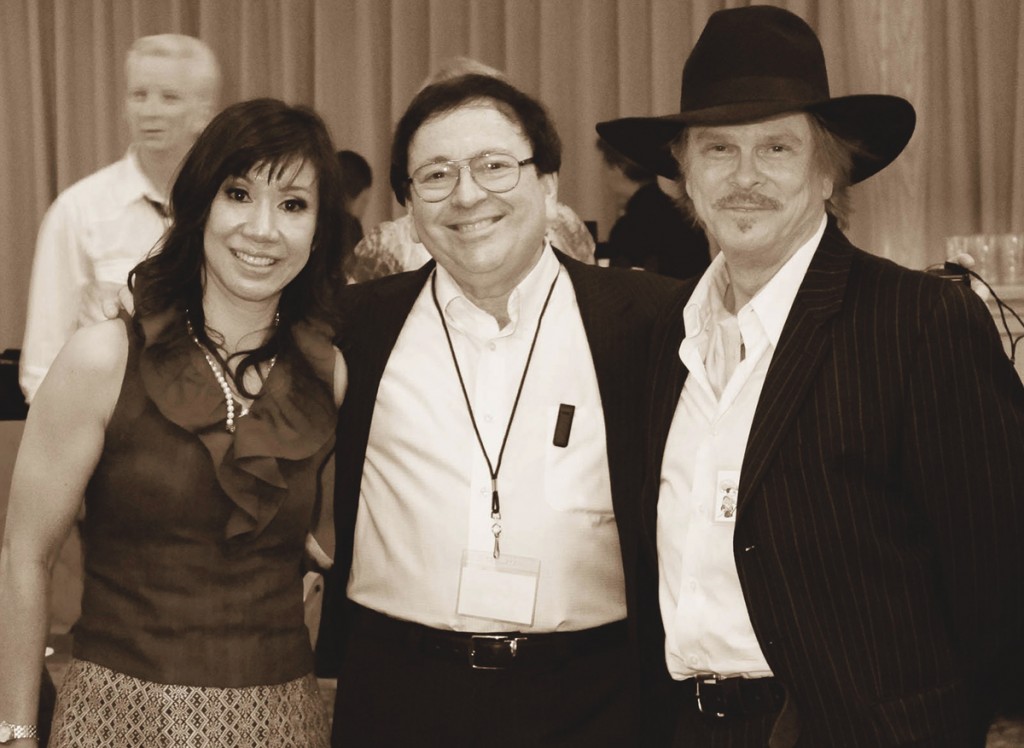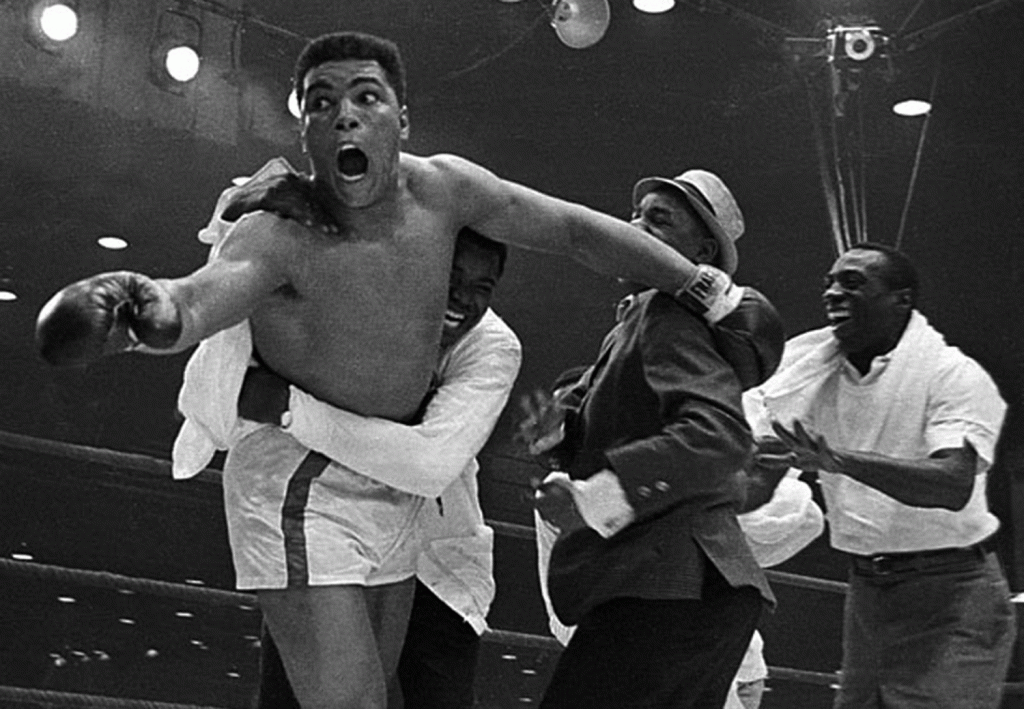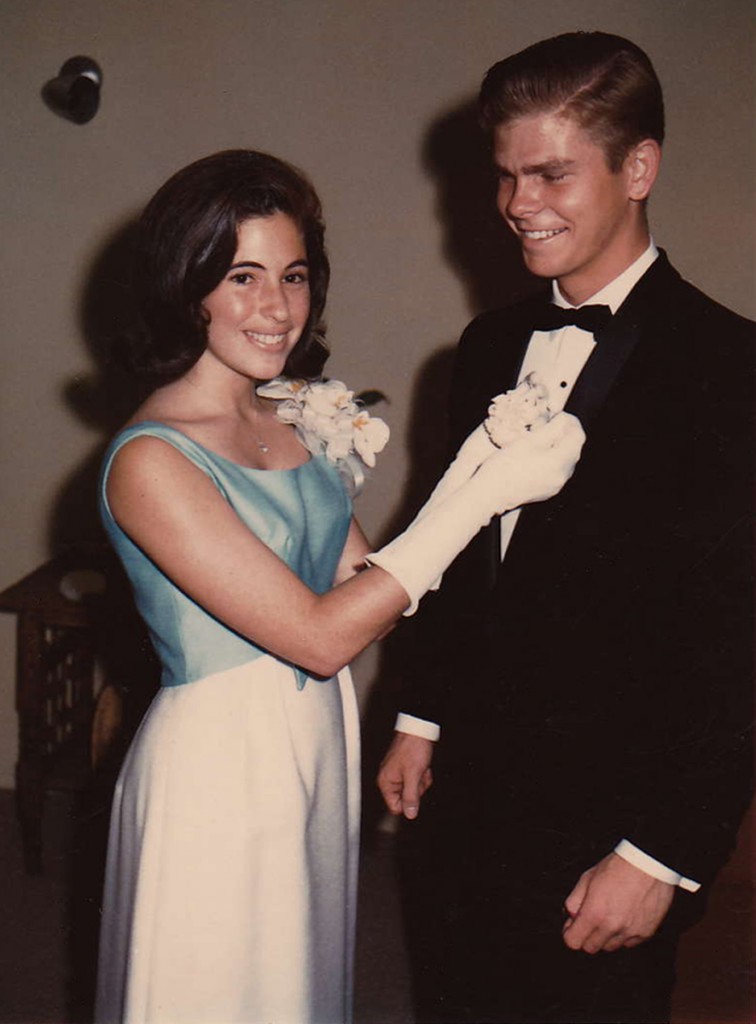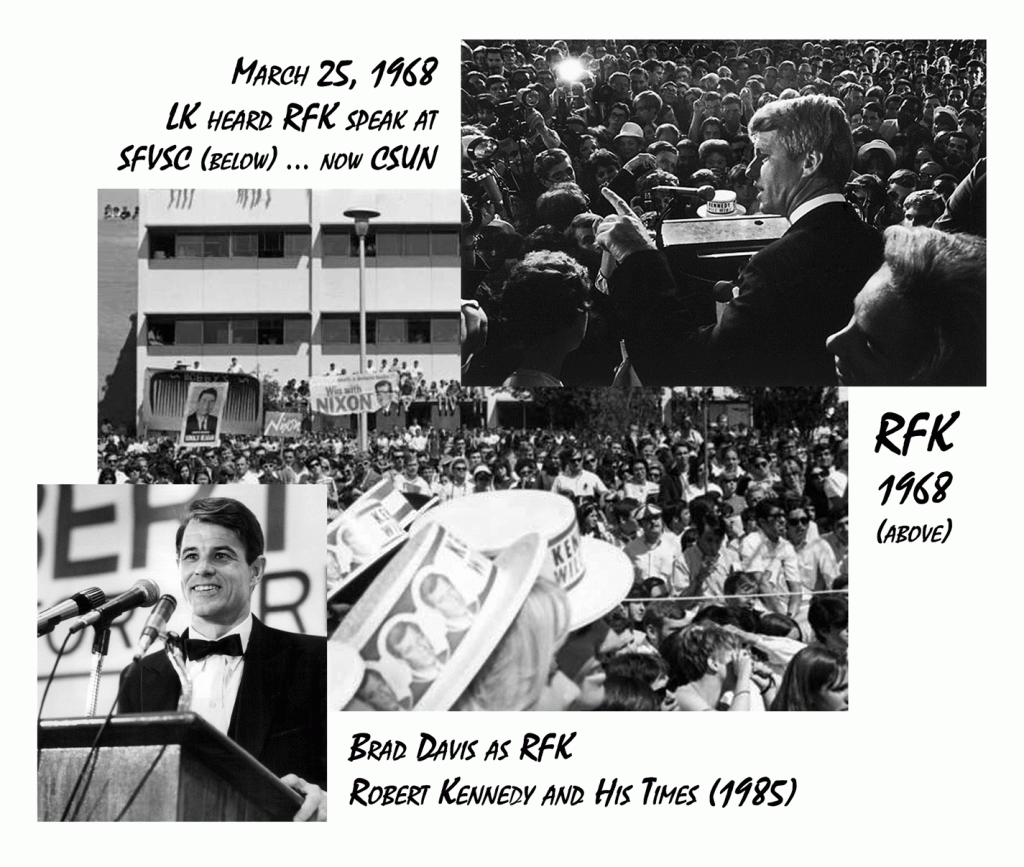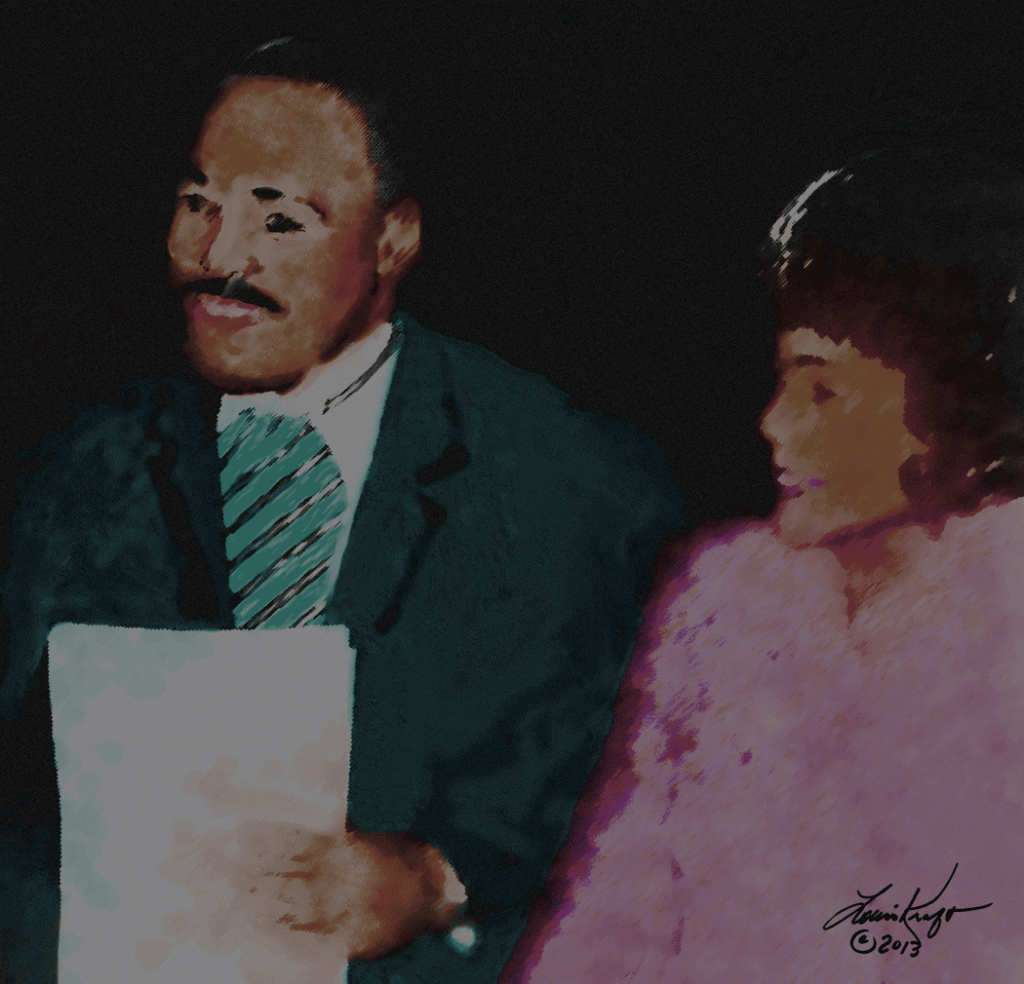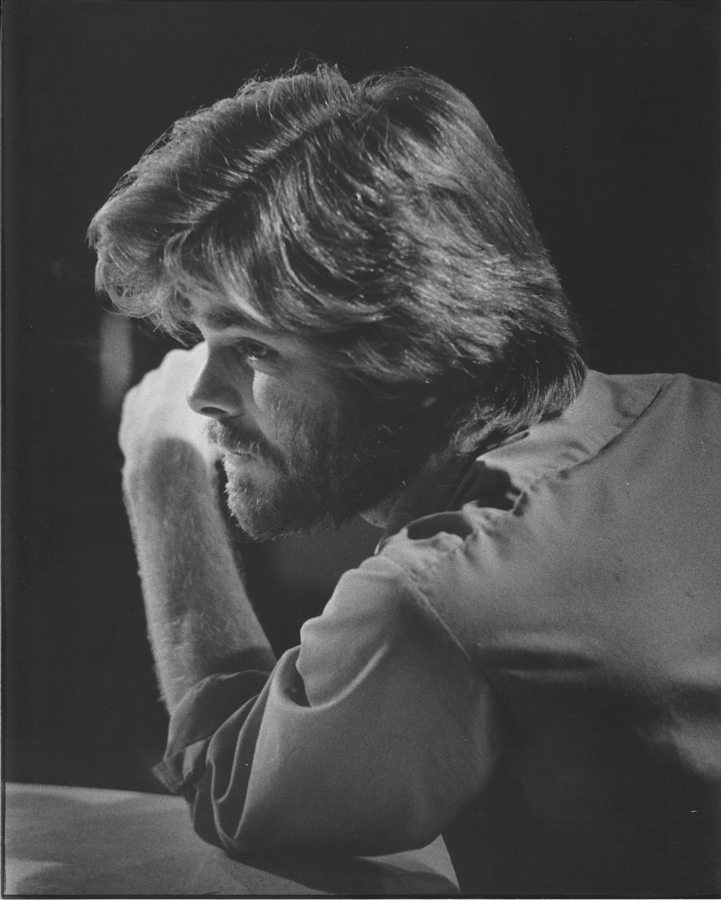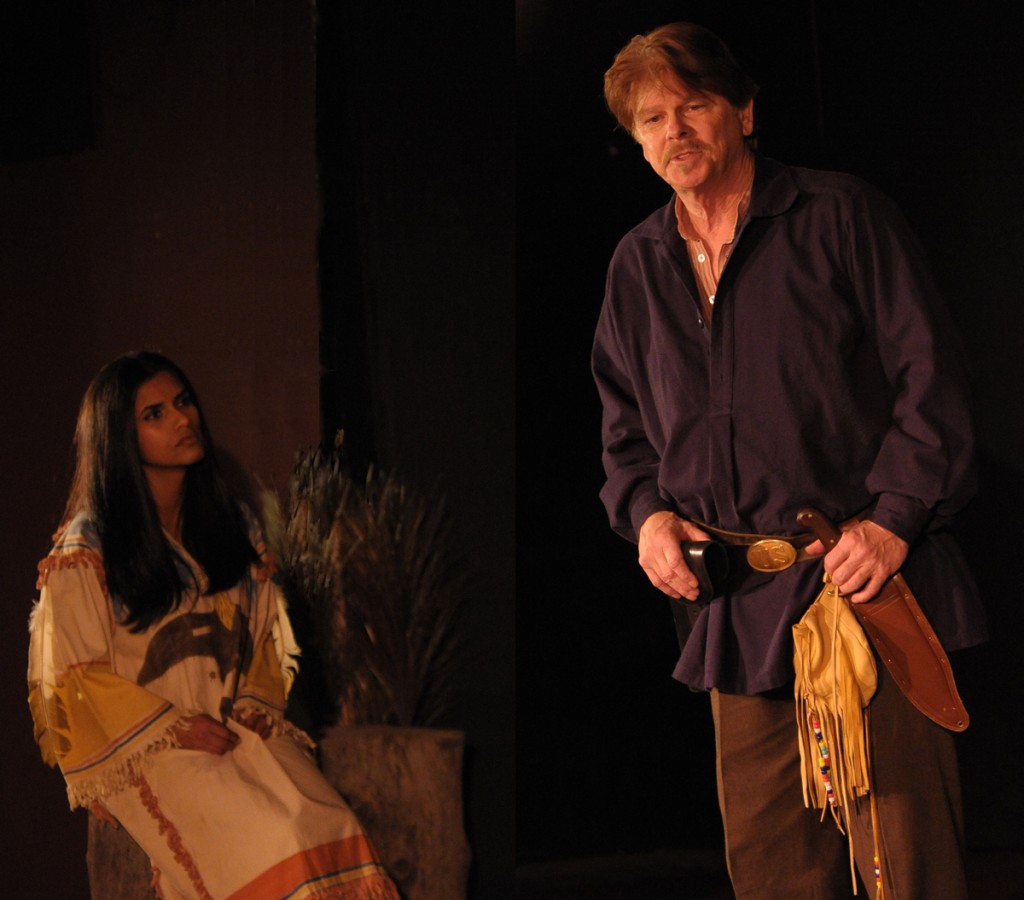Website & blogs © Louis Kraft 2013-2020
Contact Kraft at writerkraft@gmail.com or comment at the end of the blogs
Recently I proposed several ideas of what I might deal with in
my next blog on social media. A good friend of mine quickly asked me to
highlight the pirate named Francis Drake (and she had a great reason why; you’ll
meet her below). … This lady’s request confirmed my desire to do something
that has been with me for a long time and was long overdue.
Alas, and like most of my blogs, this post includes some personal stuff. This is never intended but always happens (I know the reason why, and probably you do too). … Here I’m also talking about Francis Drake; a man that if you don’t know him—you should, as he was centuries before his time.
Centuries!
The LK introduction to the pirate Drake
Francis Drake had many names, but perhaps the most important—or fearful—was what the Spaniards once called him, El Draque. To them he was the dragon, for he time and again appeared out of nowhere to steal their gold and silver, and worse put a dent in their domination over the New World in the 16th century.
I discovered him in the fifth grade, actually the first school in my life wherein I would spend more than one year in the same school. This short two year period would give me the first friends who, although not for all time, would become a good memory of my youth. Ladies and gents I love and cherish my time as I walk between our past and my current life. I’m one lucky cowboy—Ouch! I think here a better word might be pirate as I explore the past while walking into my future.
 Believe it or not it was three or four years before Errol Flynn’s death when I saw his great 1940 film The Sea Hawk for the first time on TV. This film, along with Flynn’s 1941 They Died with Their Boots On (when he played George Armstrong Custer), would impact my life more than I could ever have imagined if I had tried. I was still a year or more away from the fifth grade so I hadn’t heard of Drake yet. …
Believe it or not it was three or four years before Errol Flynn’s death when I saw his great 1940 film The Sea Hawk for the first time on TV. This film, along with Flynn’s 1941 They Died with Their Boots On (when he played George Armstrong Custer), would impact my life more than I could ever have imagined if I had tried. I was still a year or more away from the fifth grade so I hadn’t heard of Drake yet. …
LK on 31oct1958 at my first and only permanent home during my school years (Reseda, California). I believe that this image (right) is the first of me holding a sword. A proud moment for me. Within three years I would be studying the sword with the legendary American Olympian, Ralph Faulkner, who went on to double stars in American film, choreograph cinematic duels, and teach fencing in Hollywood, California, for perhaps half a century. My mother created the costume for me in this image. Unfortunately we didn’t have a morion (a helmet worn during the 16th century) or other armor that Drake might have worn. My costume was closer to pirate attire during the two golden ages of piracy in the Caribbean; late 17th century/early 18th century. My favorite pirate during this time period was Henry Morgan, but it would be years before I discovered him. (photo © Louis Kraft 1958)
I had begun buying books on Flynn before his death, and I bought his memoir My Wicked, Wicked Ways when it was published (available in LA in late 1959 or early 1960). When my mother saw it she asked: “Where did you get this?” “I bought it.” No more questions were needed as my first job was in elementary school—I had a seven-day-a-week newspaper route (not to mention that I made the rounds picking up glass bottles, and they were worth cash at the local market; oh yeah—Way back then!). Good money in those days. “Okay,” she said, “but I don’t want you talking to any of your friends about this book.” I readily agreed.
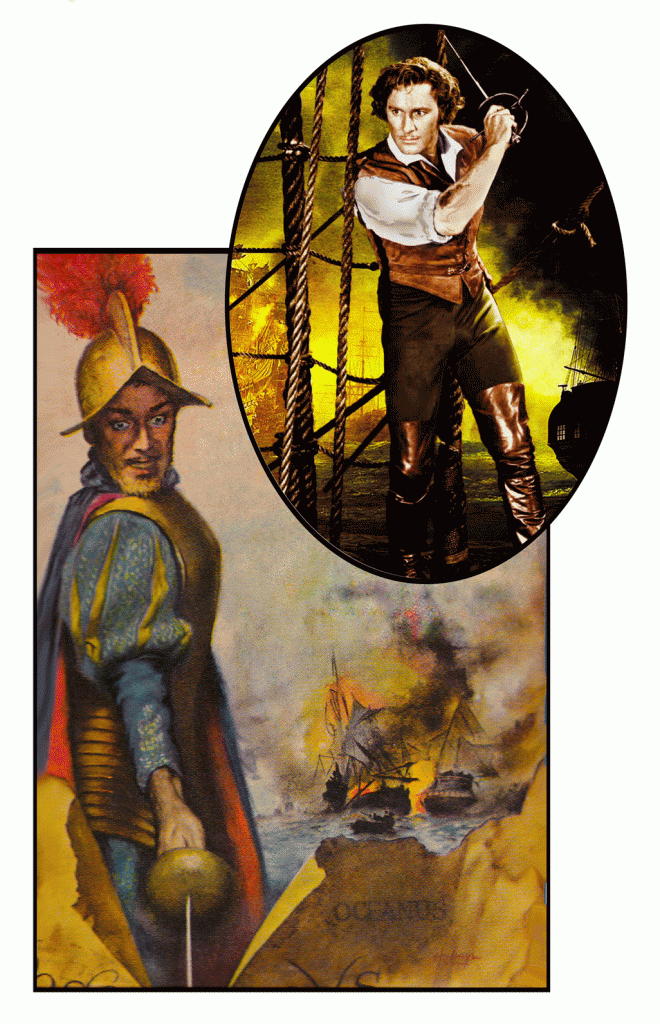
This joint image is a colorization of a publicity photo of Flynn from The Sea Hawk (Warner Bros., 1940) and this artwork by Clark Hulings appeared on the cover of F. Van Wyck Mason’s novel about Drake’s 1585-86 “West Indies” voyage, Golden Admiral. I believe that this was the first paperback publication of Mason’s novel (1960s), and Hulings’ art shames the U.S. and Australian hardbound book covers. I really like Hulings’ painting and hope to use it if I complete my planned books on Drake.
I actually didn’t make the Drake-Flynn/Geoffrey Thorpe (who EF played in The Sea Hawk) connection until sometime in high school when I began to read real books about Drake. … The Warner Bros. screenwriters Howard Koch and Seton I. Miller (and they were top-notch), wrote the screenplay for The Sea Hawk. It was based upon a story that Miller drafted called The Beggars of the Sea. I’ve never seen Miller’s draft, but it apparently detailed Francis Drake’s early exploits on the Spanish Main and the Caribbean Sea. If you are familiar with Drake and you have seen The Sea Hawk this is a no-brainer connection.

The USA one-sheet for The Sea Hawk (1940).
The film’s title is from Rafael Sabatini’s great novel about an Elizabethan who became a Barbary slave but who eventually became a feared Tunis pirate in the early seventeenth century. A great plot and story by Sabatini and a book that I enjoy every time I read it. Sabatini’s book would become a silent film, but one I’ve never seen. Warners, who owned the rights to the novel and (perhaps) the silent film, opted to go with a fictionalized Drake story. As Warner Bros. constantly did during the Golden Age of Film, they steered clear of being sued. Read that they changed names and facts to protect the innocent—mainly, yours truly, Warner Bros.
Some of you know that I’m writing a book about Errol Flynn; actually I’m writing three books about Flynn. They are all a comin’, and sooner than you might think. For the record, I have a list of what I think are the ten best films Flynn ever made (see Errol Flynn & Louis Kraft; the connection and a view for this list). Four of those films are extraordinary and The Sea Hawk and They Died with Their Boots On are two of them (perhaps someday I’ll write a blog that explains why). Actually this list was expanded to twelve—it should have been thirteen and included Four’s a Crowd (see Louis Kraft’s top 12 Errol Flynn films … a personal view).
Racism in the 1580s and in LK’s life
Yeah, racism existed in Drake’s time and it still does in our time. Usually when I talk about this subject I concentrate on race, but today I’m going to focus more on ethnicity. I was born a Catholic (you had better sit down before you read the rest of this paragraph). I would eventually become a Lutheran (who Drake was) and then a Methodist (who Ned Wynkoop was), but none of these choices by me had anything to with who I have written about or will write about. I’m me, and changes happen. I’m a citizen of the world and I’m free to choose how I worship God. For the record all of my choices throughout my life have been Jesus, my life and savior, God, and Christianity. This is what I worship and I will do so as long as I walk our world. … I have been pounded way too often because I have also cherished and cherish Mary, the mother of Jesus … Moreover I have been attacked for I am able to accept people who worship their God, be it Buddha, Maheo (the Cheyenne God), Ussen (the Apache God), or any other religion (and that included a screenplay that I wrote that dealt with an interracial relationship between a Persian woman and an American in Los Angeles at the time of the fall of the shaw of Iran in the 1970s). If you have trouble with this; it’s on you and not me.
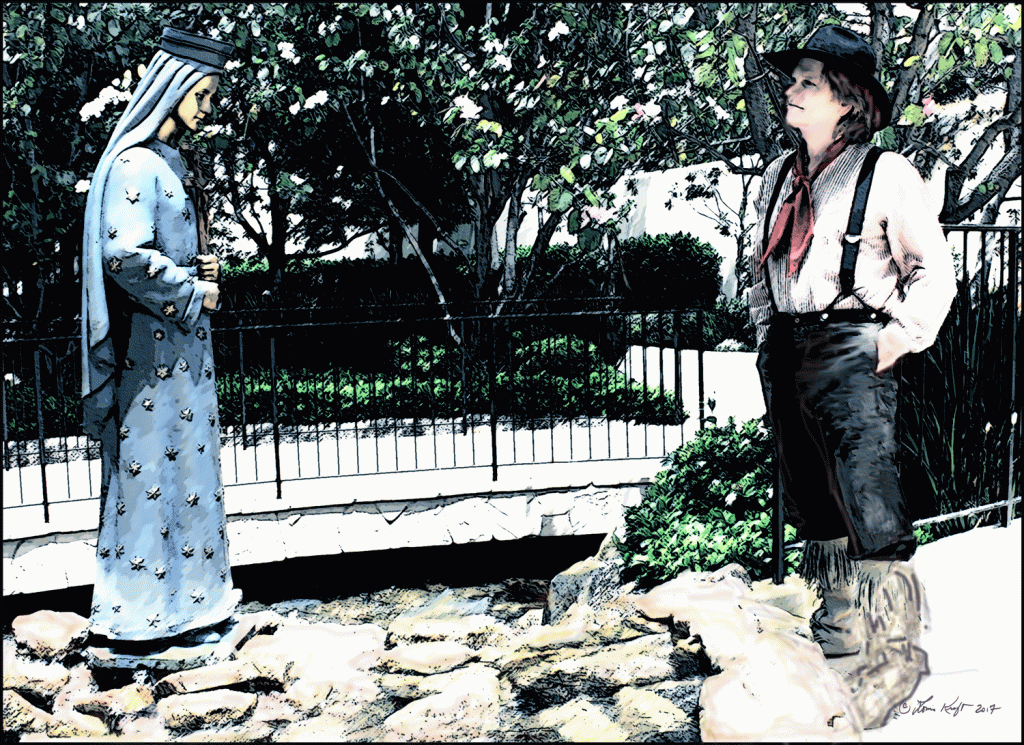
This art of LK meeting the Virgin Mary is based upon a great photo taken my friend Glen Williams at Mission San Fernando Rey de España (city of San Fernando in Los Angeles County) in May 2012. This lady is with me today, tomorrow, and always, … and I don’t give a damn about what you think. (art © Louis Kraft 2017)
Let’s make this clear right now: Mary will always be with me regardless if I pray to my God in the Catholic or Protestant religions. Always. Now and forever. I am strong and I can survive whatever criticism that might come my way (there are stories here, but they are too personal to share). If you don’t agree or like this, again that’s on you (and it is for you to do what you believe is right for you).
I speak with God and Jesus every day. Your decision of what you do is yours and it will not affect my life or my religious beliefs in any way. Nor will I ever curse you as you don’t worship your God as I do mine.
Back to the Dragon …
Both Drake and Flynn were adventurers. Both made an impact on their chosen professions. Most important both stepped outside the racial times of their day (although this last point I didn’t realize until years later when I was actually writing and selling freelance words).
By the mid-1970s I was still an actor but I had begun to write with a purpose. A harrowing experience during a summer of dinner theater in Texas had landed me a screenwriting agent. It had also landed me an acting manager. Although the push was to get me acting work, the manager, and his name was Richard Steele-Reed (alas, no longer with us), was well aware of the writing direction that had begun to take hold of my life. He suggested that we write a novel together; that is I write it and he function as an editor during the process. I liked the idea.

This art by an unknown artist that dates to the 1960s and the world of discovery and piracy. It was a baseball card, and from an unknown card set. This may, or may not, have been Francis Drake’s early entry to the New World after the disastrous John Hawkins’s slave-trading expedition of the late 1560s. Here Drake would show his true colors as he partnered with escaped African slaves that married into the indigenous tribes of people who lived in the area prior to the appearance of Columbus at the end of the 15th century. … As for the image: The men are obviously Cimarrons (more about them below), but the vessel is too large to be Drake’s Swan, which, without digging, I believe was his ship during his early 1570s sailings to the New World.
My choice for a novel: Francis Drake’s early solo voyages after the massive John Hawkins trading disaster to the Indies in 1567, wherein his slaving venture (and Drake was one of his ship captains) from Africa to the Spanish colonial cities looked to amass a huge profit. By the way, the Spanish outlawed this, but it didn’t stop the trading and selling of human cargo. There was a hurricane and Hawkins’s fleet put into the protected harbor of San Juan de Ulúa (current Vera Cruz, Mexico) to repair damage before attempting to cross the Atlantic and return to England. Bad timing placed the Spanish fleet arriving there at this time. The English fleet, and Drake commanded a small vessel called the Judith, was formidable and Hawkins worked out a truce with the Spanish viceroy. … But treachery followed and all but two English ships were sunk. The two to get out of the harbor and flee were Drake’s Judith, and he took some heat for not waiting for Hawkins, who escaped on (if my memory is good) his damaged flagship, the Minion. English seamen that were captured had a future of prison and the Spanish Inquisition (some would luckily survive the ordeal).
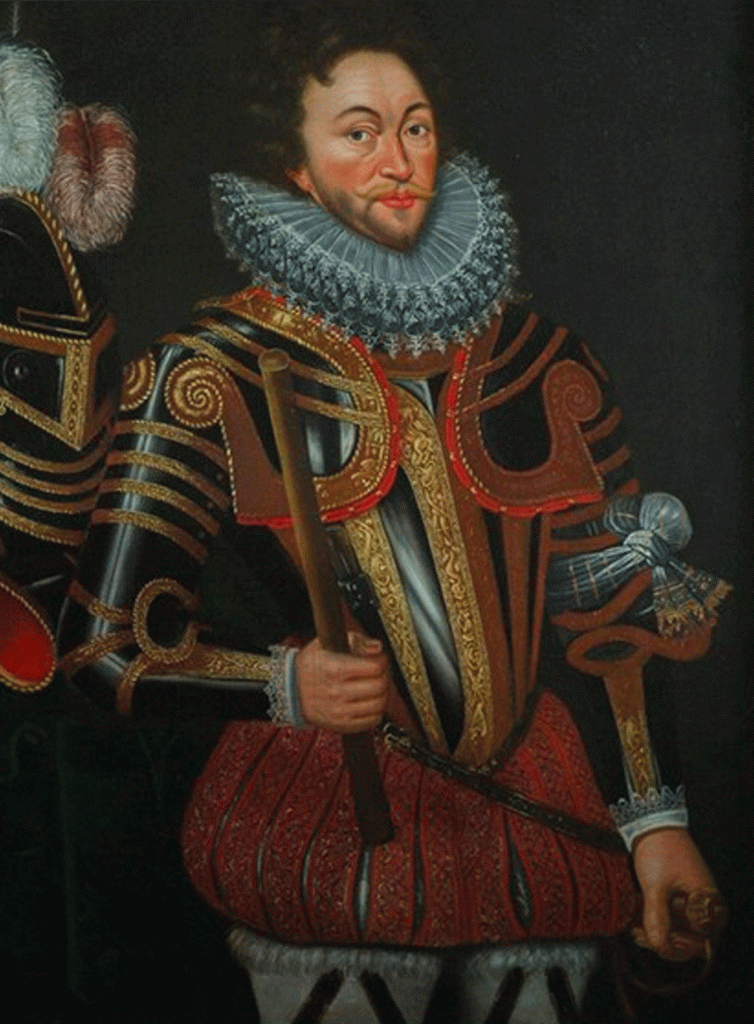
This is a detail of a newly authenticated portrait of Francis Drake. It is on loan and currently displayed at Buckland Abbey, Drake’s home that he bought 11 miles from Plymouth in Devon, England, after his return from the circumnavigation of the world in 1580. Drake’s first wife, Mary Newman, got to enjoy their magnificent new home but not for long as she died the following year. Four years later Drake married Elizabeth Sydenham. This art, which definitely captures Drake’s features is, unfortunately, not dated (and worse the artist is unknown). It predates his 1585-86 expedition to the Spanish Main and his 1587 raid on Cadiz, Spain. And it perhaps predates his triumphant return to London after the circumnavigation. If so, this pushes the date of the painting to the of end of his successful 1572-73 West Indies raid or after he served as the the navel commander for Walter Devereux, First Earl of Essex, in July 1575. The painting has brilliant colors and is alive. I love it.
This was key for both the times, which then was in the midst of a religious war that would heat up, and was also combined with the fight to control the New World, or the Americas. Currently Spain and Portugal had divided this land (what would become Mexico, Central America, South America, and the Caribbean Sea, although the Spanish had made a foothold in what would become the American Southwest and Florida) between themselves and were doing everything possible to protect what they considered their private domain. The English were interlopers (and very aware of the wealth the New World contained) and Spain realized the threat.
Drake, who was a Lutheran, now viewed Spain as his deadly enemy. Turning pirate, he launched his personal war with Spain’s New World empire. … And this was the premise of my co-authored novel with Steele-Reed. It dealt with his first exploratory voyages as he befriended Cimarrons, mixed-blood escaped African slaves who joined and married the indigenous people (that is the people who lived in the Americas prior to Christopher Columbus’s discovery of the New World) that struggled to remain free from Spanish domination. Partnering with the Cimarrons Drake learned how Spain shipped gold and silver overland via mule trains to the eastern coast of what would become Central America. He planned, he plotted, and at the same time he became a small thorn in mighty Spain’s personal domain when he attacked mostly undermanned shipping that could not avoid or repel a piratical attack at that time.

This image was taken during LK’s first time aboard Drake’s Golden Hinde II in August 1976 (San Francisco, California). I’m on (I think) the aft deck, and I’m certainly talking to my crew. There’s nothing better than living in the moment even though in this instance the moment isn’t mine. … I guess that I should share something here; when I walk in an historical person’s shoes I do whatever I can to live their moments. I want to know what they felt, and more why they did what they did. I’m a firm believer in cause and effect, and I need this to write about them in their view. (photo © Louis Kraft 1976)
This incomplete Drake draft is not in the Louis Kraft Collection in Santa Fe; it is still with me and awaiting my return to it. It is one of two Kraft planned books on Drake. The other will be nonfiction. Like Wynkoop and Sand Creek I don’t share my nonfiction plot lines until the books are published (this reason should be obvious, but if not I do not want to give the story away for one major reason—I’m slower than any historian that I know and I don’t want them to publish their book that is based upon my idea before I do).
I write about extraordinary men: Ned Wynkoop, Black Kettle, Charles Gatewood, and Errol Flynn. I also write about a magnificent woman: Olivia de Havilland, who plays a major role in Errol & Olivia. … More important, in the not-too-distant future Drake and Kit Carson will join my writing world that Flynn will soon dominate. It’s a comin’ folks, it’s a comin’. Trust me.
Who was Francis Drake?
And more importantly how do I walk with the pirate Drake and present him in words; both fictionally and in reality? I know. Actually I’ve known for decades. He is in line with above-mentioned writing subjects. By that I mean Drake stepped beyond racial prejudice and hatred and dealt with his fellow man (often his hated enemy) in a humane way. The enemy were killing his brethren, and often butchering them, torturing them, and ripping their bodies to pieces. He dealt with that, he lived with that, but when in control—that is with Spanish prisoners—he didn’t reciprocate. Conversely, he treated them as human beings.

This is Rod Taylor playing the Francis Drake in the 1963 film Seven Sea to Calais. He was brilliant as Drake (but the film never comes close to equaling his performance), and if he had decided to walk in Flynn’s steps and become a swashbuckler—and of course improved his sword skills—we would have had a great successor to Flynn’s glory years. Taylor did not, and alas we have still not seen an actor who could have followed Flynn’s swashbucklings steps. At this late date perhaps we—that is me—will never see someone who can fill Flynn’s legacy. … I’m good with this; oh baby am I good with this. It should have been Rod Taylor. That did not happen, and everyone since Rod’s time have been total failures. … It is what it is and I’m good with this. Bottom point? This just shows you just how great Flynn’s screen presence really was (and that included performing in numerous film genres).
Perhaps not in 1573, one of Drake’s most magnificent years, for he did capture and secure a Spanish treasure caravan. It would make his fortune, put his name in circulation, lead to his short association with Essex in 1575 (mentioned below the above Drake portrait currently displayed at Buckland Abbey), and more important lead to his introduction to Thomas Doughty, an aristocrat. Actually Drake’s participation was small. Sailing the Falcon (a frigate), he commanded the fleet that transported John Norrey’s army to Rathlin Island, off the coast of Ireland. On July 25 Drake used the canons on the Falcon to batter the castle’s stone walls until they crumbled. At that point Norreys began the assault as Drake sailed the coast to ensure that no Scottish ships attempted to send reinforcements. That day the fortress with 200 soldiers surrendered, and the following day the English rounded up 400 civilians who had fled to hide in caves when the English appeared. Men, women, and children, and many of them Scots who had been sent to the island because it was thought to be a safe haven. The English put them to the sword (just a saying, meaning they murdered all 600). The “Rathlin Island Massacre,” as this infamous event is now known, shows that the Spanish were not the only ones who dealt harshly with the enemy. It is unknown what Drake’s reaction was when he learned of the massacre, but his participation in this heinous event led to a friendship with Doughty (who served as Sir Christopher Hatton’s personal secretary), and this would eventually lead to his introduction to Queen Elizabeth I of England.

This is the Golden Hinde II, as it appeared in the Robert Shaw, Genevieve Bujold, James Earl Jones, and Peter Boyle film Swashbuckler (Universal Pictures, 1976). If I remember correctly Universal paid $1,000,000 to rent the Golden Hinde II. Unfortunately there were no battles at sea (guess the production only had enough money to rent one vessel). Here Shaw’s pirate ship (The Blarney Cock) is bombarding a stone execution gibbet that is just above the Jamaican town of ??? (can’t remember; Port Royal?) before making a daring rescue of Jones, who was about to be hung.
Better, it would lead to his proposal to attack the Spanish settlements on the western coast of the Americas (advertised as a trading voyage to the Nile). This would lead to riches beyond belief for him, his crew, his queen, and the investors in the piratical raid. This included his circumnavigation of the globe*, which led to his knighthood in 1581. This voyage, if studied, is mind-boggling. Yes, it is that magnificent, and again it demonstrates in bold letters Drake’s daring as well of his view of humankind and Spain. His relationship with indigenous people continued as he circled the globe. At times he wined and dined his Spanish captives aboard the Golden Hinde; (after transporting the treasure from the Cacafuego, see below italicized note, which took five days, Drake released the ship and its crew on the evening of March 5) treating them with humanity and respect, something that wasn’t expected during the second half of the 16th century.

The Golden Hinde II under full sail.
* Drake did not initially plan to sail around the globe. Instead he hoped to return to England by discovering the western entrance to the (still thought to exist) Northwest Passage and sail this unchartered waterway back to the Atlantic Ocean. Reason: He knew that his raids along the western coast of the Americas, and this included the March 1, 1579, capture of the Spanish treasure ship Nuestra Señora de la Concepción (also called Cacafuego) off the coast of what would become Ecuador, guaranteed that a Spanish fleet would be waiting for him to return to the Strait of Magellan, the 373-mile water passage below southern-most portion of mainland South America and north of Tierra de Fuego. When Drake realized that the Northwest Passage didn’t exist he had but one choice to return home—sail west into the Pacific Ocean.
Yep, Francis Drake, a lowly born Englishman, became a member of the realm. He was a self-made man, and by that I mean a person who dared to step outside the stated doctrines of his life and times, and stand firm for his country, religion, culture, and freedom.
“I vote for Drake! Please?”
How could I refuse the lady’s request? … And especially since Drake has been with me for a long time. “My friend, El Draque (the Dragon) it is.”
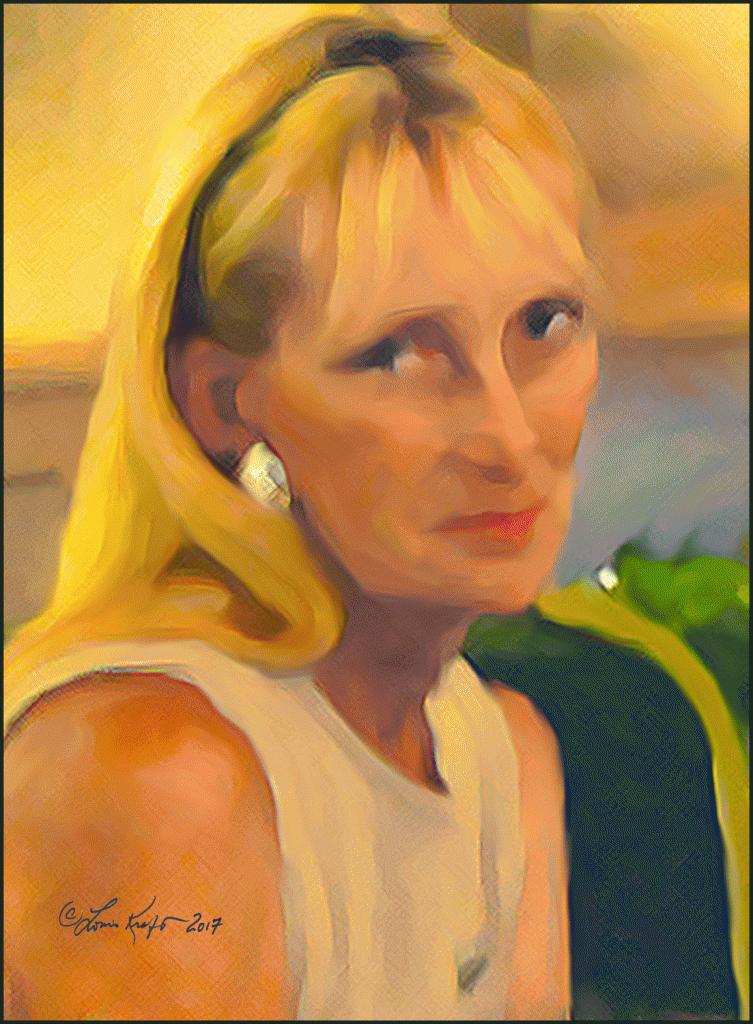
This is MaryLou Backus. She is a beautiful and slender person that I am lucky to know. We are close on many subjects from the American Indians and into our world of today. When I had raised the question of perhaps writing a blog about Francis Drake she immediately replied yes. (art of MaryLou © Louis Kraft 2017)
When I had raised the question of who I should next highlight in my next blog on social media a long-distance friend spoke up quickly with the words in this heading. Her request was quick (actually she was the only person to reply on the first day of the post).
Back to this lady, and I haven’t shared her name except in the image to the right. She is MaryLou Backus. … She and I have much in common even though we have never met. Better, she is a lady after my heart. Unbelievably her family believes that that they are directly related to Francis Drake, who, to repeat myself, lived in a time of extreme racial and religious prejudice, as well as hatred and butchery. He refused to murder other human beings. … And he was a pirate. …
I’m still with MaryLou. She is an absolutely gorgeous lady who luckily I’ll meet sometime in our future. Social media linked us in our joint interest in the American Indian wars. When I proposed this blog to her, MaryLou had this to say: “Wonderful! I grew up on tales of him [Drake] having been an ancestor. I have no idea if it’s true, but of course it created a fascination.” I can’t walk away from MaryLou’s hope. Not today; not ever! I wish that I could join her and claim that Mr. Drake was also my relative. I can’t. Her claim is real; it’s alive, and I’m certain that the back story to what she has heard has the possibility of being true. My view? Wow! MaryLou, you are so lucky to have the pirate Drake perhaps being your relative.
… And there’s more to MaryLou’s extraordinary reminiscence of her family’s living history and connection to the pirate Drake who would become Sir Francis. This remembrance of MaryLou must not be forgotten, and here’s another reason why. … “And somebody was supposed to have some old doubloons squirreled away,” she told me. “As a kid, I always dreamed of finding them in somebody’s attic. Ha!” Good stuff.
Knighted and a national hero
When Drake returned from his circumnavigation and was knighted, he had no idea that his service, which ranged from piracy to loyalty to his country, had not yet ended.

This is the April 1581 Nicholas Hilliard miniature of Drake. It is a portrait of Drake the year after he completed the circumnavigation of the globe in 1580. It is in the National Maritime Museum on the Thames River in Greenwich across from London proper. Also in this museum complex is the Queen’s House. In 2009 I visited Olivia de Havilland at her home for the second time upon her invitation. I don’t fly to Paris without a full agenda to wrap three weekends around two weeks. My then special lady (Diane Moon) wanted to also see London (cool for me, as I wanted to see some of the classic paintings of Drake in person). I would have liked to have traveled to Plymouth to do research and see Buckland Abby but that would have added another week as I would have had to do some serious Drake and Devon research. Heck, I got to spend time on the Golden Hinde II for the third time as it is now docked in London (and I assume that it is still berthed on the Thames River). Believe it or not, my lady and I had the ship to ourselves during this visit (it pays to be an early bird); some good research material at the shop that handled visits aboard this oh-so famous replica vessel. … I’ve missed flights, and on this trip I almost missed two—that’s right—two Eurorail trips (from Paris to London and London back to France). Diane was okay with the first mess up as we threw our bags onto the train and boarded it seconds—yes, seconds—before the doors closed and we were thrown to the floor as the train jerked forward, but when we almost missed the train back to France she was livid. The reason was simple: We would have missed our return flight to the USA. … Back to the story, we took a Thames boat ride to Greenwich and explored the National Maritime Museum (a wonder!). We saw Hilliard’s miniature and other decent art of Drake, but not the 1591 jewel portrait of him. It was supposed to be at the museum. I asked, and was told that it was in the Queen’s House (a part of the museum complex). We hustled to the house (perhaps a 300-yard distance from the National Maritime Museum), but it closed at five and it was now a few minutes after five. For the record this was not Elizabeth I of England’s house but James I’s (the Scot who succeeded Elizabeth on the English throne as she left no heirs) wife’s house, and it was built a little over 10 years after Elizabeth’s death. My friend and historian Eric Niderost (who is also a professor in Northern California) shared this information with me, and I am forever grateful. … Diane and I couldn’t talk our way into the building. Devastating! We took our boat ride back to Big Ben and then the subways to our hotel. After dinner she said to me, “We have time tomorrow morning. Let’s go to the Queen’s House.” This was based upon the misinformation that had I shared with her of when Eurorail would take us back to France (yeah, sometimes Kraft isn’t the smartest pirate wandering our modern world). Another roundtrip on the Thames and me seeing the Drake jewel portrait became my second highlight of the trip; seeing Livvie, as Flynn called Olivia de Havilland, for the third time was definitely number one. … A print of this great 1581 Drake portrait is in the personal LK collection, as is the magnificent 1591 jewell portrait.
The Spanish threat of death to all heretics continued; that is death to all that did not accept Catholicism. Drake enjoyed a short but peaceful time in his homeland, but he lost his first wife (I don’t know how she died). Several years later he married a second time. Life was good, but the Spanish threat refused to go away. Ever the pirate the now patriot Drake helmed a massive invasion of the New World. He would attack and seize major cities, including Cartagena (Columbia’s northern coast of the Caribbean Sea, current South America). While in control of the city he sent an African emissary to negotiate with the Spanish only to watch a Spanish officer murder his negotiator. Drake could not accept this and demanded that the officer who committed the crime be delivered to him. This was done and Drake had the murderer executed. The Spanish threat of death to all heretics continued. Elizabeth and many in England felt vulnerable to invasion. Spies reported King Philip II of Spain was amassing a huge armada in Cadiz.
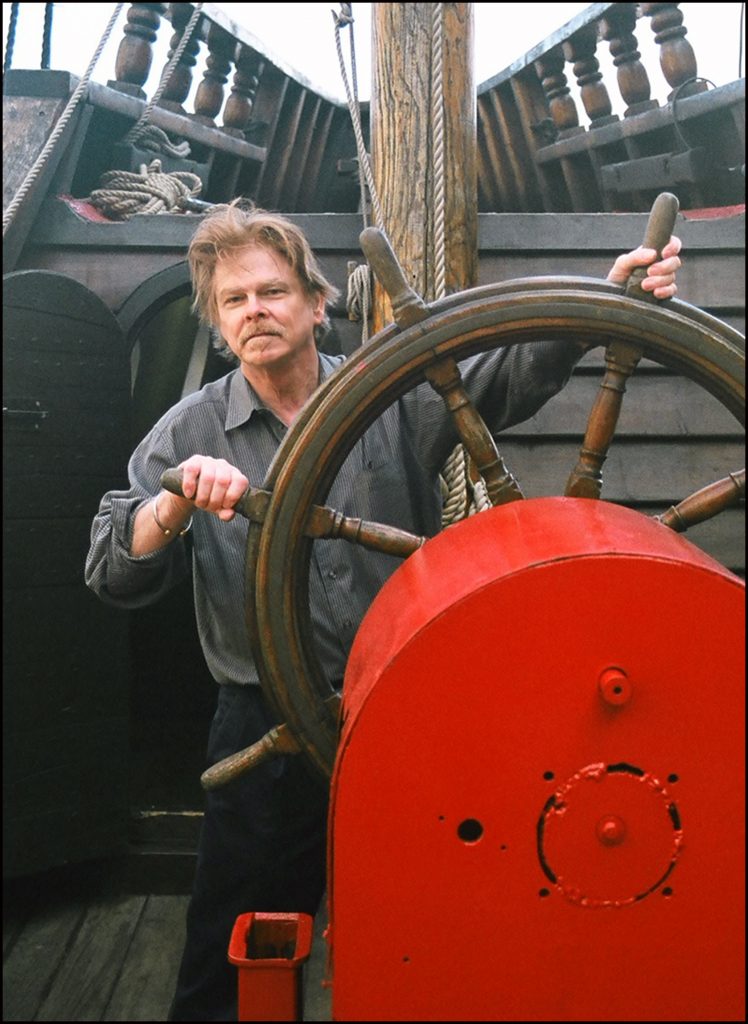
I have shared larger copies of this image elsewhere on social media but never before on my blog. I am at the helm of Drake’s Golden Hinde II on 10jul2009, which means that I was in a live-world heaven. Originally the helm had a whipstaff for the wheel didn’t exist in Drake’s day. I’m on the half deck of the Golden Hinde II. (photo © Louis Kraft 2009)
Francis Drake (the British pirate) and Francis Drake (the British knight) was a man for all time. … For the record he would have easily walked with frontiersman Ned Wynkoop, Cheyenne chief Black Kettle, and actor Errol Flynn as they all stepped beyond racism. As already stated Drake lived during a time of extreme religious prejudice, a time of absolute butchery of the foe (let’s not forget the American frontier or the modern world of warfare). I have not yet figured out how Drake could step beyond his times and accept people who were of different color and in the case of the Spanish prayed to a God that, although similar to his, preached the elimination—that is the murder—of everyone that did not accept and pray to Jesus as viewed through the Catholic Church. This was a harsh time wherein “infidels,” that is those that did not cherish and praise Jesus Christ exactly as those who accepted Catholicism as worshiped in the Spanish empire were evil and needed to burn at the stake. I can’t begin to imagine the Inquisition or the horror of this kind of death.

This artwork of Sir Francis Drake (1594) is a copy of the magnificent 1591 jewel portrait of him (a copy of the jewel portrait is in his cabin on the Golden Hinde II, currently docked in London, and the original painting is in the Queen’s House in Greenwich). This unknown artist’s rendition is rough—at best (actually, it isn’t very good).
During the attempted Spanish Armada invasion of England in 1588 Drake again played a major role, although he also acted as he had in the past, mainly as a pirate acting on his own hook. I hate authority and love this. Regardless of how we view his actions at this climatic time in England’s history he was a patriot.
Francis Drake was born a protestant, and he would die a protestant. He was born into a world of racism, and his entire life would exist in a harsh climate of religious hatred and brutal murder of those who prayed to a different Jesus Christ and God.
But Francs Drake was different. He was a pirate, and later a knight of the realm. He and those he loved were always at risk of death if the Spanish conquest of England won out. It didn’t, and he and his family survived. Francis Drake would never know Ned Wynkoop, Black Kettle, or Errol Flynn, and they most likely never considered his life, and yet all of them are tied between the ages and time in that they accepted people of a different race, color, and religion as just people.
This is something that everyone currently walking our world should do. Lordy, if all of us could just do this, what a better world we would have. Think of it … a world without racial or religious prejudice and hate, … a world without conquest and genocide, … a world wherein a woman and a man are equal.
Yep, I dream for a future that I’ll never see.




